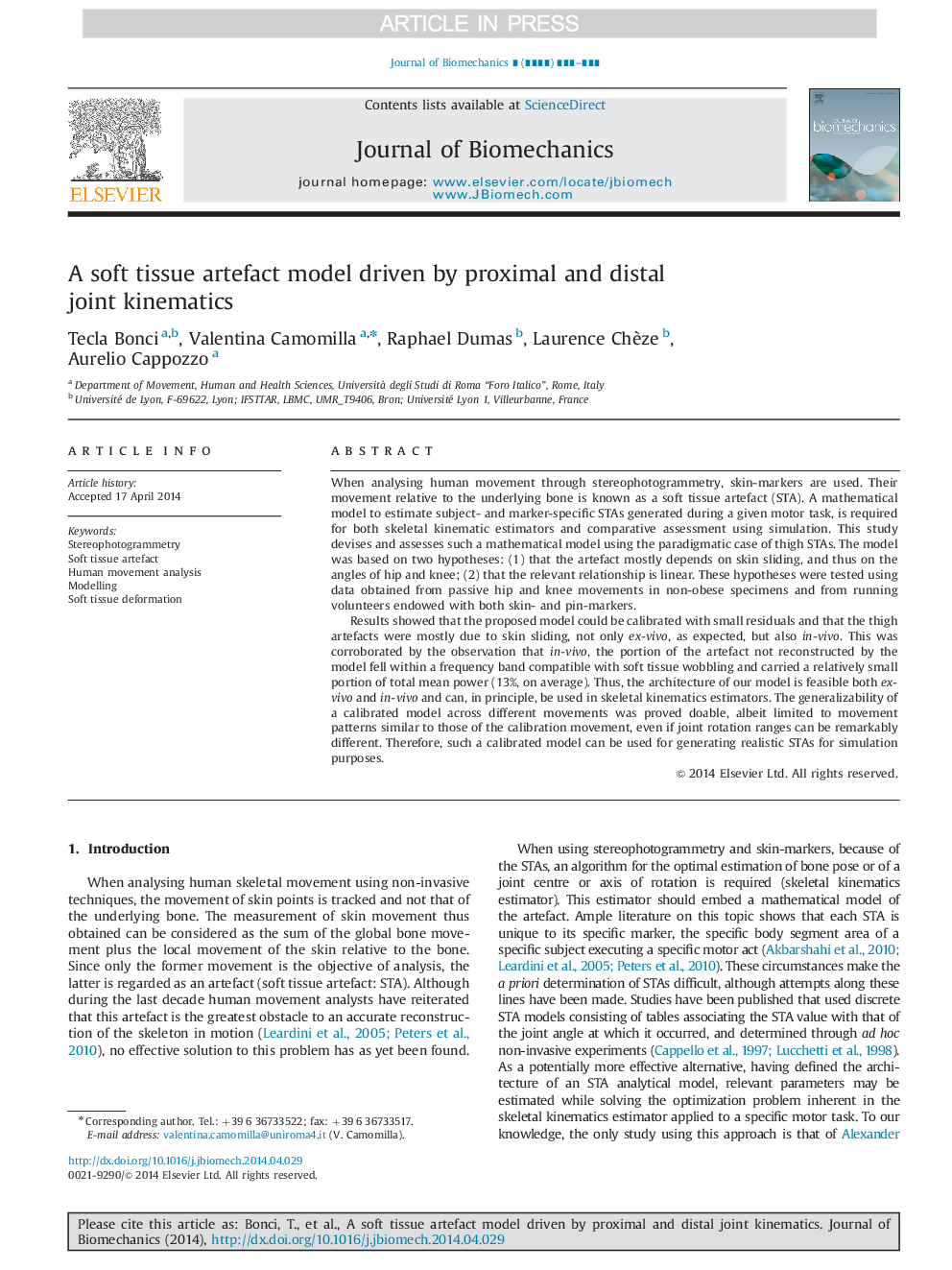| Article ID | Journal | Published Year | Pages | File Type |
|---|---|---|---|---|
| 10431777 | Journal of Biomechanics | 2014 | 8 Pages |
Abstract
Results showed that the proposed model could be calibrated with small residuals and that the thigh artefacts were mostly due to skin sliding, not only ex-vivo, as expected, but also in-vivo. This was corroborated by the observation that in-vivo, the portion of the artefact not reconstructed by the model fell within a frequency band compatible with soft tissue wobbling and carried a relatively small portion of total mean power (13%, on average). Thus, the architecture of our model is feasible both ex-vivo and in-vivo and can, in principle, be used in skeletal kinematics estimators. The generalizability of a calibrated model across different movements was proved doable, albeit limited to movement patterns similar to those of the calibration movement, even if joint rotation ranges can be remarkably different. Therefore, such a calibrated model can be used for generating realistic STAs for simulation purposes.
Keywords
Related Topics
Physical Sciences and Engineering
Engineering
Biomedical Engineering
Authors
Tecla Bonci, Valentina Camomilla, Raphael Dumas, Laurence Chèze, Aurelio Cappozzo,
